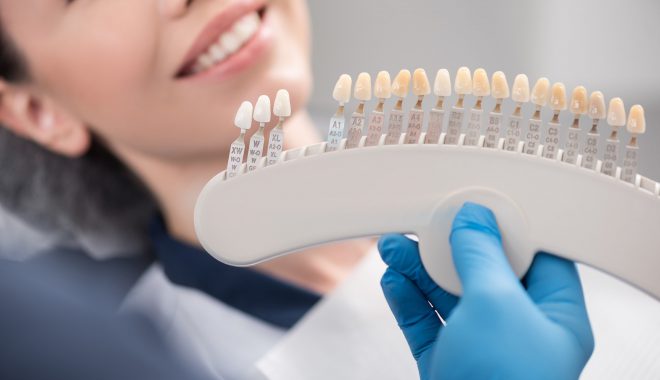About Cosmetic Dentistry
Today, cosmetic dentistry is more popular than ever, from whitening and shaping to closing spaces and replacing teeth. And dentists have a wide array of tools and techniques at their disposal for improving the look of your smile.
Before deciding to undergo any cosmetic procedure, it’s important to know the benefits and risks and what you can expect during the process. Make sure you’re clear about what it will cost, how much experience your dentist has with the procedure, and whether any special maintenance will be needed afterward.
Types of Cosmetic Dentistry
Teeth Whitening
Teeth whitening can be one of the simplest and least expensive ways to improve your smile. Teeth can be bleached with in-office products in your dentist’s office for about $500, or you can buy a mold and gels from your dentist to bleach your teeth at home. There are also whitening products available over the counter at retail stores for convenient at-home whitening: whitening toothpastes, rinses, and white-strips.
Dental Veneers
Dental veneers are wafer-thin, custom-made shells of tooth-colored porcelain or resin that cover the front surface of the teeth. After removing about a half-millimeter of enamel from the tooth surface, these thin shells are bonded (cemented) to the front of the teeth, changing their color, shape, size, or length.
Dental Bonding
In dental bonding, a tooth-colored, putty-like resin, which is a durable plastic material, is applied to the tooth and hardened with an ultraviolet or laser light, bonding the material to the tooth. Your dentist then trims, shapes, and polishes it. Bonding can repair decayed, chipped, cracked, or misshapen teeth; it is also a good cosmetic alternative to, or replacement for, amalgam or silver fillings.
Dental Crown
A dental crown, also called a cap, fits over and replaces the entire decayed or damaged tooth above the gum line, restoring its shape, size, strength, and appearance. Crowns keep a weak tooth from breaking or hold a cracked tooth together; they can be used cosmetically to cover misshapen or severely discolored teeth.
Inlays and Onlays
Inlays and onlays , also called indirect fillings, are made from gold, porcelain, or composite materials and fill decayed or damaged teeth. Dental fillings are molded into place during an office visit; however, inlays and onlays are created in a dental laboratory and bonded into place by your dentist. The filling is called an “inlay” when the material is bonded within the center of a tooth; it is called an “onlay” when the filling includes one or more points of the tooth or covers the biting surface. Inlays and onlays preserve as much healthy tooth as possible and are an alternative to crowns.
Dental Implants
Dental implants are titanium replacement tooth roots inserted into the bone socket of the missing tooth. As the jawbone heals, it grows around the implanted metal post, anchoring it securely in the jaw and providing a foundation for a replacement tooth.
Other Options
A bridge is made of crowns for the teeth on either side of a gap with false teeth in between. A denture is a removable replacement for missing teeth. Dental braces can straighten crooked or misaligned teeth and works by applying continuous pressure over a period of time to slowly move teeth in a specific direction Sources:

